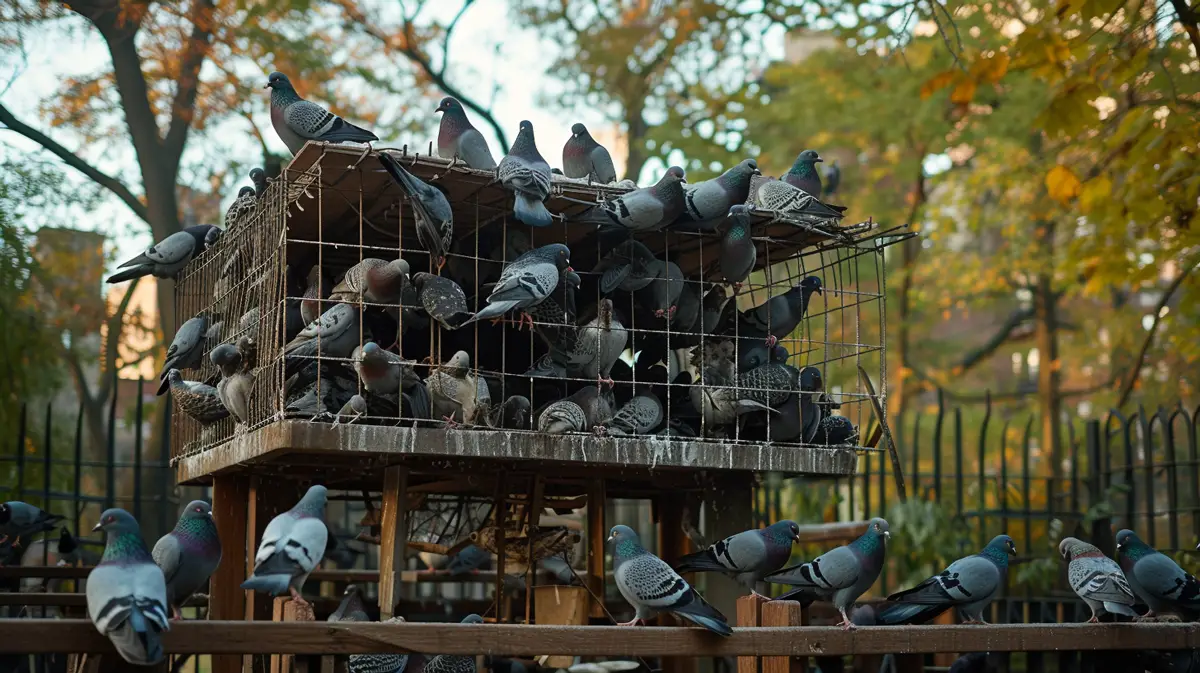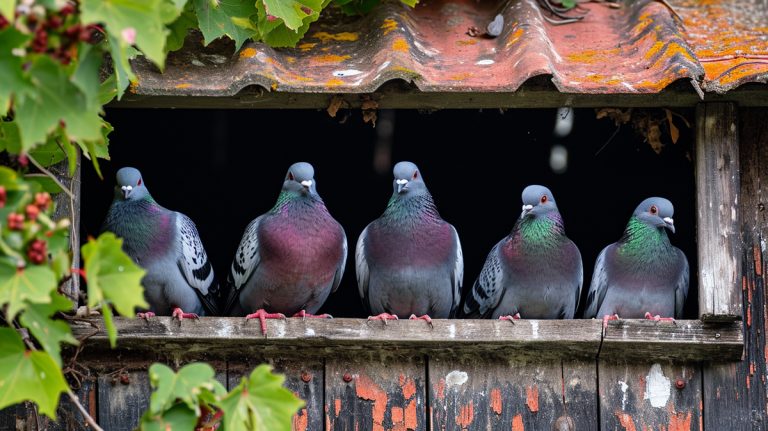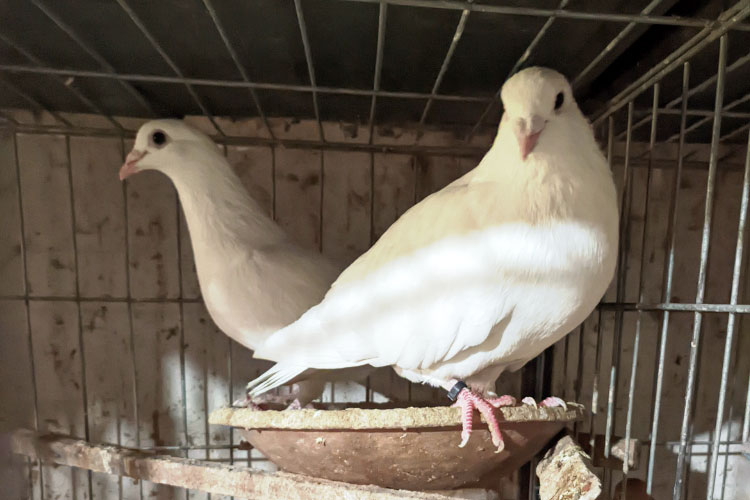Pigeon Coop Location: Factors, Needs, and Design Tips
Are you considering starting your own pigeon coop? Well, you’ve come to the right place! As an experienced pigeon enthusiast, I’m here to share my knowledge and guide you through the exciting world of pigeon coops. Whether you’re a beginner or a seasoned pigeon keeper, this article will provide you with essential information and tips to create a comfortable and functional home for your feathered friends. From selecting the perfect location to designing the coop layout, I’ll cover everything you need to know to create a safe and welcoming space for your pigeons. So, let’s dive in and get started on this exciting journey together!
Selecting the Right Location for Your Pigeon Coop

When it comes to starting your own pigeon coop, selecting the right location is crucial for the well-being and safety of your feathered friends. Here are some important factors to consider when choosing the perfect spot for your pigeon coop:
- Space: Ensure that you have enough space to accommodate the size of your pigeon coop. Pigeons need room to spread their wings and move around comfortably. A minimum of 4 square feet per pigeon is recommended.
- Sunlight: Pigeons thrive in natural sunlight, so it’s important to choose a location that receives ample sunlight throughout the day. A sunny spot will also help keep the coop dry and prevent the growth of algae and mold.
- Ventilation: Good airflow is essential for maintaining a healthy and odor-free pigeon coop. Look for a location that allows for proper ventilation, such as near a window or on an open rooftop. This will help remove moisture and prevent the buildup of harmful gases.
- Predator Protection: Pigeons are vulnerable to predators such as cats, rats, and birds of prey. Select a location that is secure and protected from these potential threats. Consider installing wire mesh around the coop or choosing a spot that is inaccessible to predators.
- Noise Levels: Pigeons are sensitive to loud noises and sudden disturbances. Avoid placing the coop in a noisy area or near busy roads. Opt for a quieter location where your pigeons can feel calm and safe.
Remember, the location of your pigeon coop will significantly impact the health and well-being of your pigeons. Take the time to assess these factors and choose a spot that meets all their needs. In the next section, I’ll share some tips on designing the layout of your pigeon coop to maximize comfort and functionality.
Understanding the Needs of Your Pigeons
When it comes to having a successful pigeon coop, it’s crucial to understand the needs of your pigeons. These birds have specific requirements for their health and well-being, and meeting these needs will ensure that your pigeons thrive in their environment. Here are some key factors to consider:
- Space: Pigeons require enough space to move around comfortably. A cramped and overcrowded coop can lead to stress and health issues. Aim for a minimum of 1 square foot of floor space per pigeon.
- Lighting: Pigeons need access to natural sunlight for vitamin D synthesis and overall well-being. Ensure that your coop has windows or skylights to provide adequate sunlight during the day.
- Ventilation: Good airflow is essential for a healthy pigeon coop. Proper ventilation helps remove excess moisture, heat, and odors, which can lead to respiratory problems. Consider installing vents or windows that can be opened and closed as needed.
- Predator Protection: Pigeons are vulnerable to predators such as rats, cats, and birds of prey. Make sure your coop is secure and predator-proof. Use sturdy materials for construction, install secure doors and windows, and consider adding wire mesh or fencing around the coop.
- Noise Levels: Pigeons have sensitive hearing, so it’s important to keep noise levels in check. Avoid placing the coop in a noisy area such as near busy roads or construction sites. Keep in mind that loud noises can stress your pigeons and interfere with their well-being.
By understanding and addressing these needs, you can create a comfortable and optimal environment for your pigeons. This will not only promote their health and well-being but also have a positive impact on their performance and breeding capabilities.
Now that we have explored the needs of your pigeons, let’s move on to the next section, where I’ll provide some tips on designing the layout of the pigeon coop for maximum comfort and functionality.
Planning the Design of Your Pigeon Coop

When it comes to designing your pigeon coop, there are a few key factors to consider. A well-thought-out design can make a significant difference in the comfort and functionality of your coop. Here are some tips to help you plan the design of your pigeon coop:
- Size matters: It’s important to provide enough space for your pigeons to move around comfortably. Consider the number of pigeons you have and the amount of space they require. A general rule of thumb is to allow at least 1 square foot of space per pigeon. However, keep in mind that larger breeds may need more space.
- Layout and accessibility: Think about the layout of your pigeon coop to ensure easy access for cleaning and maintenance. It’s best to have a coop with removable or sliding walls and floors that can be easily cleaned. Additionally, including separate compartments for nesting, feeding, and roosting can help create a well-organized and functional space.
- Natural sunlight: Pigeons thrive in natural sunlight, so it’s important to design your coop with ample access to sunlight. Consider positioning the coop in an area that receives maximum sunlight exposure throughout the day. Additionally, installing windows or translucent roofing materials can help bring in natural light while still providing protection from the elements.
- Ventilation: Good ventilation is crucial for the health and well-being of your pigeons. Make sure your coop has proper ventilation to allow for adequate air circulation. This can be achieved by installing windows, vents, or mesh openings that allow fresh air to flow in and stale air to escape.
- Predator protection: Protecting your pigeons from predators is essential, especially if you live in an area with potential threats. Ensure that your coop is secure and predator-proof by using sturdy materials and adding locks or latches to doors and windows.
By considering these factors when planning the design of your pigeon coop, you can create a comfortable and functional space for your pigeons. Remember to prioritize the well-being and needs of your feathered friends to promote their health and performance.
Building a Sturdy and Secure Pigeon Coop
When it comes to building a pigeon coop, it’s crucial to focus on creating a sturdy and secure structure. This will provide a safe and comfortable home for your pigeons, ensuring their well-being and allowing them to thrive. Here are some important considerations to keep in mind:

- Materials: Choosing the right materials is essential for building a long-lasting and robust pigeon coop. Opt for durable materials such as wood or metal that can withstand various weather conditions and provide ample protection against predators. Using quality materials will also minimize the chances of your pigeons escaping or the coop collapsing.
- Structure and Design: The structure and design of your pigeon coop should be thoughtfully planned to maximize functionality and space utilization. Consider factors such as the number of pigeons you plan to house, as well as their size and flying habits. A well-designed coop will provide enough room for your pigeons to move around comfortably and engage in natural behaviors.
- Ventilation: Adequate airflow is crucial for maintaining a healthy environment within the pigeon coop. Proper ventilation will help regulate temperature, reduce humidity, and prevent the buildup of ammonia from bird waste. Incorporate windows or vents in your coop design to ensure a constant flow of fresh air.
- Predator Protection: Protecting your pigeons from possible predators is essential to their safety. Incorporate features like secure locks, sturdy mesh, or wire fencing to prevent access to the coop by predators such as cats, rats, or birds of prey. Ensure that there are no gaps or openings that predators can exploit to harm your pigeons.
Remember, building a sturdy and secure pigeon coop requires careful planning and attention to detail. By considering the materials, structure, ventilation, and predator protection, you can create a safe and comfortable home for your pigeons. These factors will contribute to the well-being and overall performance of your feathered friends.
Creating a Comfortable Environment for Your Pigeons
When it comes to keeping pigeons, creating a comfortable environment is essential. As I mentioned earlier, understanding the needs of your pigeons is crucial in ensuring their health and well-being. Here are some factors to consider when creating a comfortable living space for your feathered friends:

1. Providing enough space: Pigeons need ample space to stretch their wings and move around freely. Make sure your pigeon coop is spacious enough to accommodate the number of pigeons you have.
2. Access to natural sunlight: Just like humans, pigeons need exposure to sunlight for their overall well-being. Ensure that your pigeon coop has access to natural daylight, either through windows or skylights.
3. Proper ventilation: Good air circulation is important for the health of your pigeons. Make sure your coop has proper ventilation to keep the air fresh and prevent the buildup of ammonia and other harmful gases.
4. Predator protection: Pigeons are vulnerable to predators such as cats, rats, and birds of prey. Take necessary measures to protect your pigeons, such as installing wire mesh or netting to prevent access to the coop.
5. Noise control: Pigeons are sensitive to noise, especially sudden loud sounds. Keep noise levels in check by ensuring that your pigeon coop is situated in a quiet area away from major sources of disturbance.
By addressing these needs, you can create a comfortable and optimal environment for your pigeons, promoting their health, well-being, and overall performance.
Remember, each pigeon has its own unique requirements, so pay attention to their behavior and adjust the environment accordingly. Providing a comfortable space for your pigeons will not only keep them happy and content but also contribute to their overall performance.
Conclusion
Creating the perfect pigeon coop requires careful consideration of various factors. By understanding the needs of your pigeons and addressing them appropriately, you can ensure their health, well-being, and overall performance.
When selecting a location for your pigeon coop, factors such as space, sunlight, ventilation, predator protection, and noise levels are crucial. Providing enough space, access to natural sunlight, proper ventilation, and implementing measures to protect your pigeons from predators are essential for their comfort and safety.
Additionally, when planning the design of your pigeon coop, considerations such as size, layout, accessibility, natural sunlight, ventilation, and predator protection should be taken into account. These factors contribute to creating a functional and comfortable space for your pigeons.
Building a sturdy and secure pigeon coop involves choosing the right materials, structuring and designing the coop, ensuring proper ventilation, and implementing predator protection measures. These steps are vital for creating a safe and comfortable home for your pigeons.
By addressing these needs and following the guidelines discussed in this article, you can create an optimal environment for your pigeons, promoting their overall well-being and performance.






